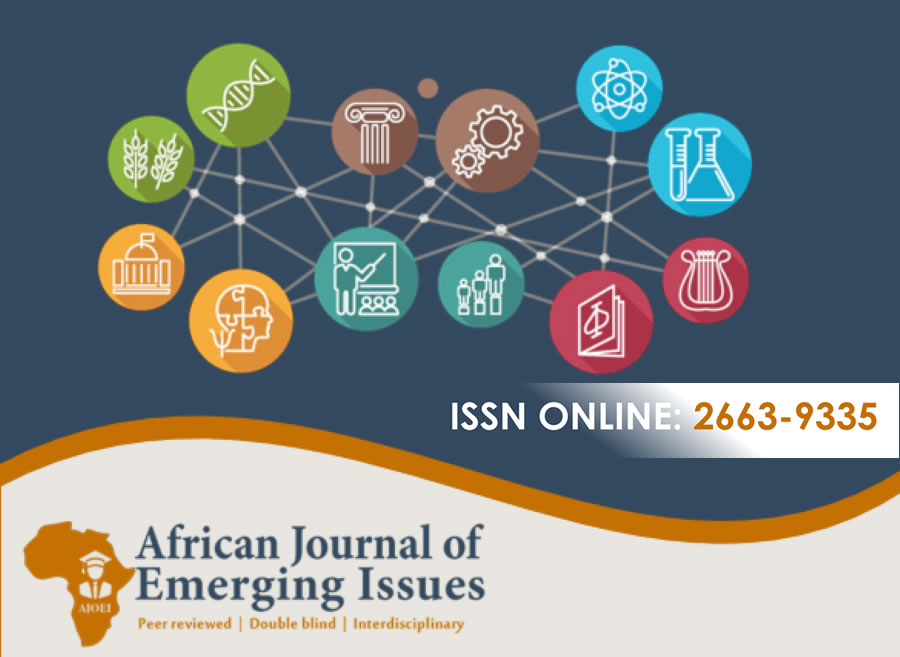COMPETITIVE STRATEGIES CONTRIBUTING TO COMPETITIVENESS OF THE KENYAN NATIONAL MUSEUMS: THE CASE OF NAIROBI NATIONAL MUSEUMS
Abstract
Purpose of the study: The study sought to determine competitive strategies contributing to competitiveness of the Kenyan National Museums in a case of Nairobi National Museums. In particular, the study investigated the impact of cost leadership, differentiation and niche strategy on the competitiveness of NMK.
Statement of problem: The influx of new privately owned museums in the industry has posed a considerable competitive threat to the National Museum of Kenya. Introduction of such museums have resulted in NMK losing some of its clients particularly cultural clients who prefer themed museums. A review of the firm’s collective revenue collection also indicates a reduction as the firm recorded reduced revenues in the last three consecutive years.
Research methodology: A descriptive research design was adopted. The investigation targeted the management at NMK who are drivers of strategy at the organization. In total, 80 respondents were selected using the census approach.
Findings: Competitive strategies investigated had a positive impact on the competitiveness of NMK. Cost leadership was observed to have the most significant impact on the competitiveness of NMK. On the other hand, differentiation was demonstrated to have the second most significant impact on NMK competitiveness. Finally, niche strategy was observed to have the least significant impact on the competitiveness of NMK.
Conclusions: The study concluded that for the organization to realize the desired competitiveness, it has to adopt effective cost leadership. The study also concluded that cost leadership strategies, focus/niche strategies and differentiation strategies had a positive effect on competitiveness.
Recommendations: It was recommended the firm need to discontinue or outsource services that do not meet the demands of cost leadership strategy. Additional recommendation was made for the firm to reduce marginal costs of advertising and marketing to enhance their business performance.
Keywords: Competitive strategy, Competitiveness, cost leadership strategies, focus/niche strategies, differentiation strategies, National Museum of Kenya.
References
Akbar, F., Bin Omar, A., & Wadood, F. (2015). Niche Marketing Strategy and Firm Success: Review on SMEs in Peninsular Malaysia. International Journal Of Research & Review, 2(11).
Ali, A. (2017). Organizations: Human Capital, Coordination and Cooperation. International Journal of Information Management Sciences, 1(1), 41-48.
Arshed, N., & Pancholi, J. (2016). Porter’s Five Forces. Enterprise and its Business Environment.
Bell, E., Bryman, A., & Harley, B. (2018). Business research methods. Oxford university press.
Bhakar, S. S., Kaurav, R. P. S., Parashar, M. P., & Sankpal, S. (2016). Sustainable Competitive Advantage through Integrated Marketing Approach.
Dirisu, J., Iyiola, D., & Ibidunni, D. (2013). Product Differentiation: A Tool Of Competitive Advantage And Optimal Organizational Performance (A Study Of Unilever Nigeria Plc). European Scientific Journal, 9(34).
Gerard, H. T. (2018). The Relevance of Porter’s Five Forces In Today’s Innovative And Changing Business Environment.
Gorondutse, A., & Hilman, H. (2017). Influence of differentiation strategy on performance of hotels: the moderating role of environmental munificence. Journal Of Business And Retail Management Research, 11(4).
Hilman, H., & Kaliappen, N. (2014). Do Cost Leadership Strategy and Process Innovation Influence the Performance of Malaysia Hotel Industry?. Asian Social Science, 10(10). doi: 10.5539/ass.v10n10p134
Huang, K. F., Dyerson, R., Wu, L. Y., & Harindranath, G. (2015). From temporary competitive advantage to sustainable competitive advantage. British Journal of Management, 26(4), 617-636.
Juliana, J. P. E., & Nyoman, Y. N. (2019). Factors Influencing Competitiveness of Small and Medium Industry of Bali: Porter’s Five Forces Analysis. Russian Journal of Agricultural and Socio-Economic Sciences, 45.
Kiprop, G. (2014). Competitive Strategies And Sustainable Competitive Advantage At The Pact Incorporation. Retrieved from http://erepository.uonbi.ac.ke
Mukherjee, I. (2018). Applying Porter’s Five Force Framework in Emerging Markets—Issues and Recommendations. In Strategic Marketing Issues in Emerging Markets (pp. 307-316). Springer, Singapore.
Munyiri, L. N. (2014). Competitive strategies and customer retention among commercial banks in Kenya. Unpublished MBA Project, University of Nairobi.
Mwangi, E. W., &Ombui, K. (2013). Effects of competitive strategies on the performance of mission hospitals in Kenya (A case of Kijabe Mission Hospital). International Journal of Science and Research, 2(11), 14-19.
Ndunge, T. (2012). Response strategies to challenges of competition by horticultural export firms in Kenya, Unpublished MBA Project, University of Nairobi.
Odunayo, A. (2018). Market Focus Strategy and Organizational Performance Of Telecommunication Companies In Port Harcourt. International Journal Of Innovative Research And Advanced Studies, 5(3).
Porter, M. E., & Heppelmann, J. E. (2017). Why every organization needs an augmented reality strategy. Harvard Business Review, 95(6), 46-57.
Porter, M., & Magretta, J., (2014). Strategy and Competition: The Porter Collection (3 Items). Harvard Business Review Press.
Ruto, J., & Ayuo, A. (2019). Effect of Cost Leadership Strategy On Organizational Performance: A Case Of Non-Life-Insurance Companies In Eldoret Town Kenya. Africa Peer Reviewed Journals, 1(3).
Tanwar, R., (2013). Porter's generic competitive strategies. Journal of business and management, 15(1), 11-17.
Teeratansirikool, L., Siengthai, S., Badir, Y., & Charoenngam, C. (2013). Competitive strategies and firm performance: the mediating role of performance measurement. International Journal of Productivity and Performance Management, 62(2), 168-184.
Vogel, R., & Güttel, W. H. (2013). The dynamic capability view in strategic management: A bibliometric review. International Journal of Management Reviews, 15(4), 426-446.
Warnier, V., Weppe, X., &Lecocq, X. (2013). Extending resource-based theory: considering strategic, ordinary and junk resources. Management Decision, 51(7), 1359-1379.





